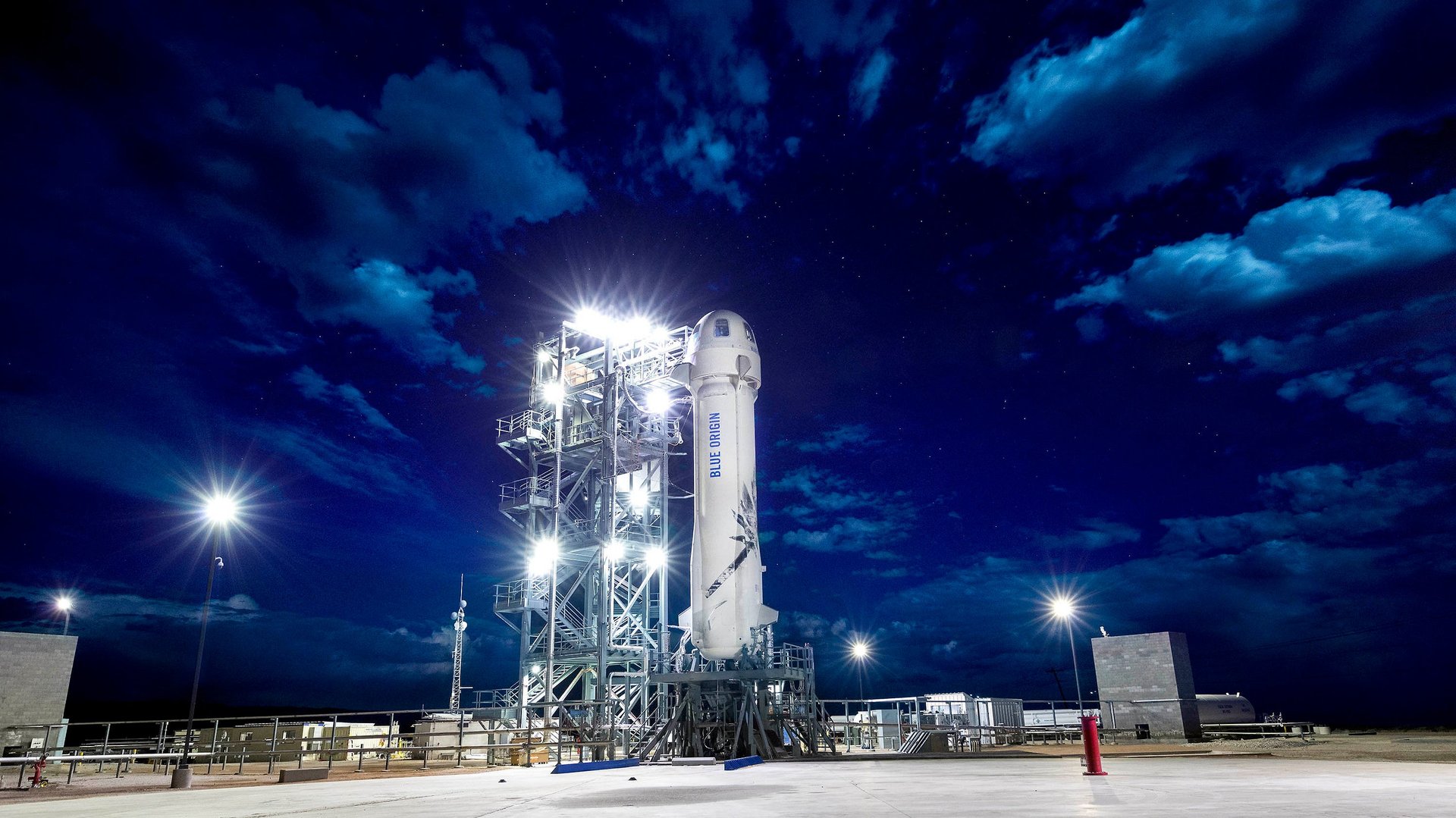Is Jeff Bezos’ space company making money off the New Shepard rocket?
A major objection to space business is nobody makes any money doing it. It’s a good objection!


A major objection to space business is nobody makes any money doing it. It’s a good objection!
Government contractors and satellite TV broadcasters, along with their supply chains, do well in the current ecosystem. But we’re still waiting to see if space companies with ambitions of serving a different customer base—your Virgin Galactics, your Planets, your Made-in-Spaces, your Momentuses—can succeed as profitable ventures.
So it was noteworthy that after Blue Origin’s reusable New Shepard rocket completed its thirteenth mission on Oct. 14, soaring 65 miles (105 km) to the edge of space and returning to earth safely, CEO Bob Smith characterized the program as profitable. “We make money on every flight,” he said.
Erika Wagner, Blue Origin’s payload sales director, told Quartz that the company decided in 2019 to dedicate the vehicle that launched this week to cargo flights. “We’ve had 10 consecutive flights with payloads on board, have flown over 100 payloads total, and have had paying customer payloads on every flight,” Wagner told Quartz. “We have customers booked on flights for the next couple of years and are rapidly filling those manifests.”
Could Blue really be flying this cargo profitably?
The company didn’t want to talk specifically about the economics, but we can make an educated guess. Scientists are willing to pay handsomely to loft research payloads into a microgravity environment. For this flight, NASA paid Blue Origin about $700,000 to test moon landing technology, alongside eleven other research payloads.
In the past, the company said one of its full-size research payload lockers costs between $50,000 and $120,000, although it has smaller spaces available for as little as $8,000. Not knowing all the details, let’s put the revenue for this launch in the ballpark of $1 million.
How much does it cost to fly the New Shepard once? Again, we’re reduced to educated guessing. One ballpark figure is the estimated per-flight cost of Virgin Galactic’s Space Ship Two rocket plane, a very different vehicle but with similar capabilities, which came in at about $430,000 in the company’s 2019 prospectus. Both these vehicles are reusable, so the marginal cost comes down to propellant (fairly cheap); the team of technicians, engineers, and other support staff (Blue says it needs “fewer than 26 people” in the control room); and whatever inspections and refurbishment must be performed before and after flights (unknown territory).
So it’s believable that the New Shepard made a profit on this individual flight, maybe even a large one. But nota bene: Much of the revenue here still came from the government. And more importantly, given the hundreds of millions of dollars Blue Origin founder Jeff Bezos spent developing the New Shepard, the vehicle likely only makes accounting sense as a pilot project for the company’s forthcoming New Glenn rocket and more lucrative engine-building work.
Or, perhaps, if it starts flying people. Blue Origin hasn’t said how much passenger tickets for New Shepard will cost, but Virgin Galactic is charging $250,000 a seat. At that rate, a New Shepard launch could bring in $1.5 million a flight.
But the enduring mystery of New Shepard, originally billed as a space tourism project, is why it has yet to take a person into space after thirteen apparently successful test flights. Blue didn’t want to talk in detail about the development program, rumored to see its first human passenger in 2021, but Wagner said that “all the flights in our program have been a part of the verification process and practicing operations for first human flight.”
The future of both Blue Origin and Virgin Galactic is likely to include flying research and researchers: Yesterday, Virgin Galactic announced that Alan Stern, a planetary scientist, would be the first to fly alongside his experiments in a mission funded by NASA to the tune of $450,000 to $650,000. That flight isn’t likely to happen until after the company makes its first trip to space from its new headquarters in New Mexico sometime later this year.
That means 2021 might bring with it actual competition between two different space tourism companies, moving that much closer to space tickets cheap enough to afford without NASA footing bill.
A version of this story originally appeared in Quartz’s Space Business newsletter.